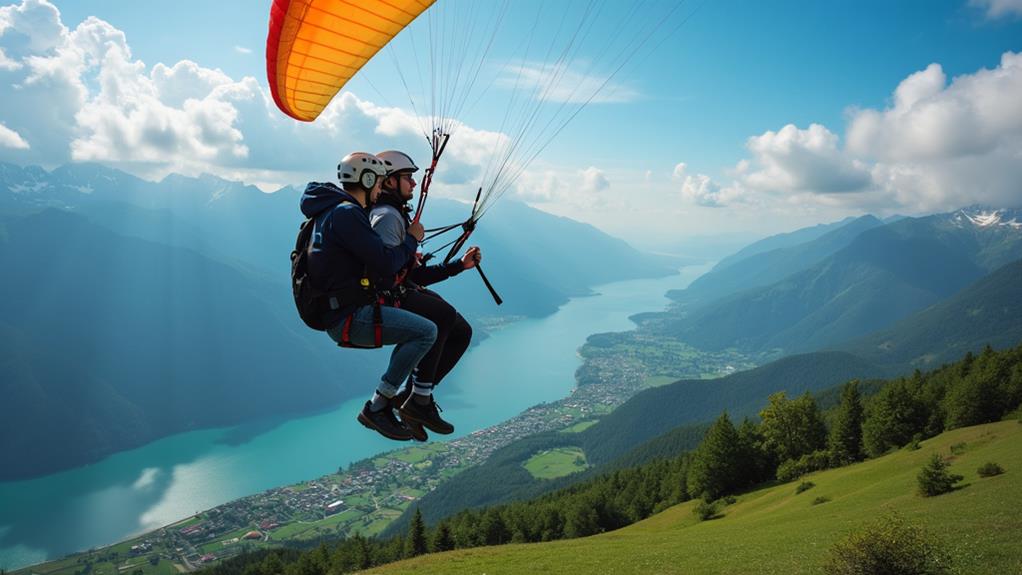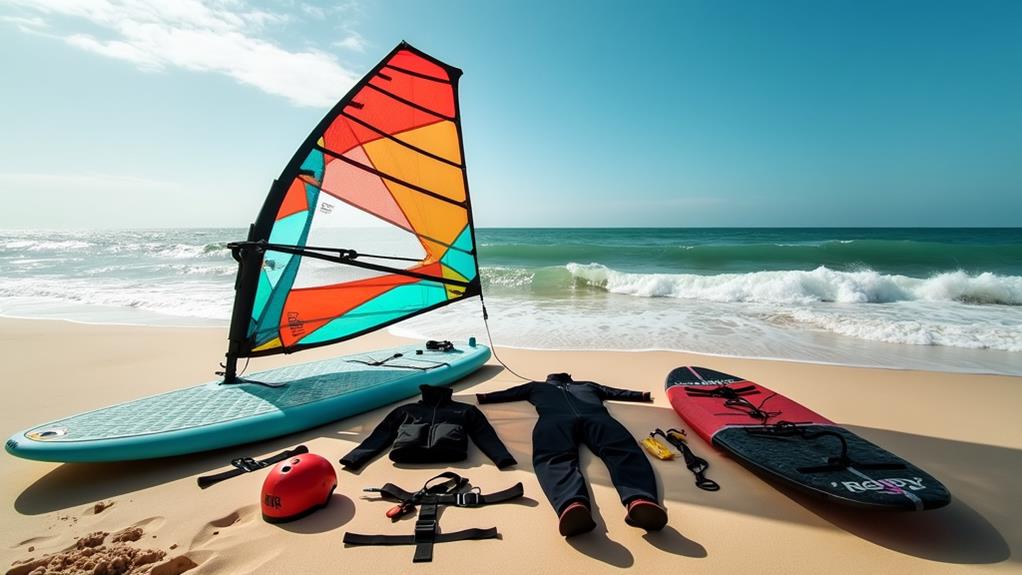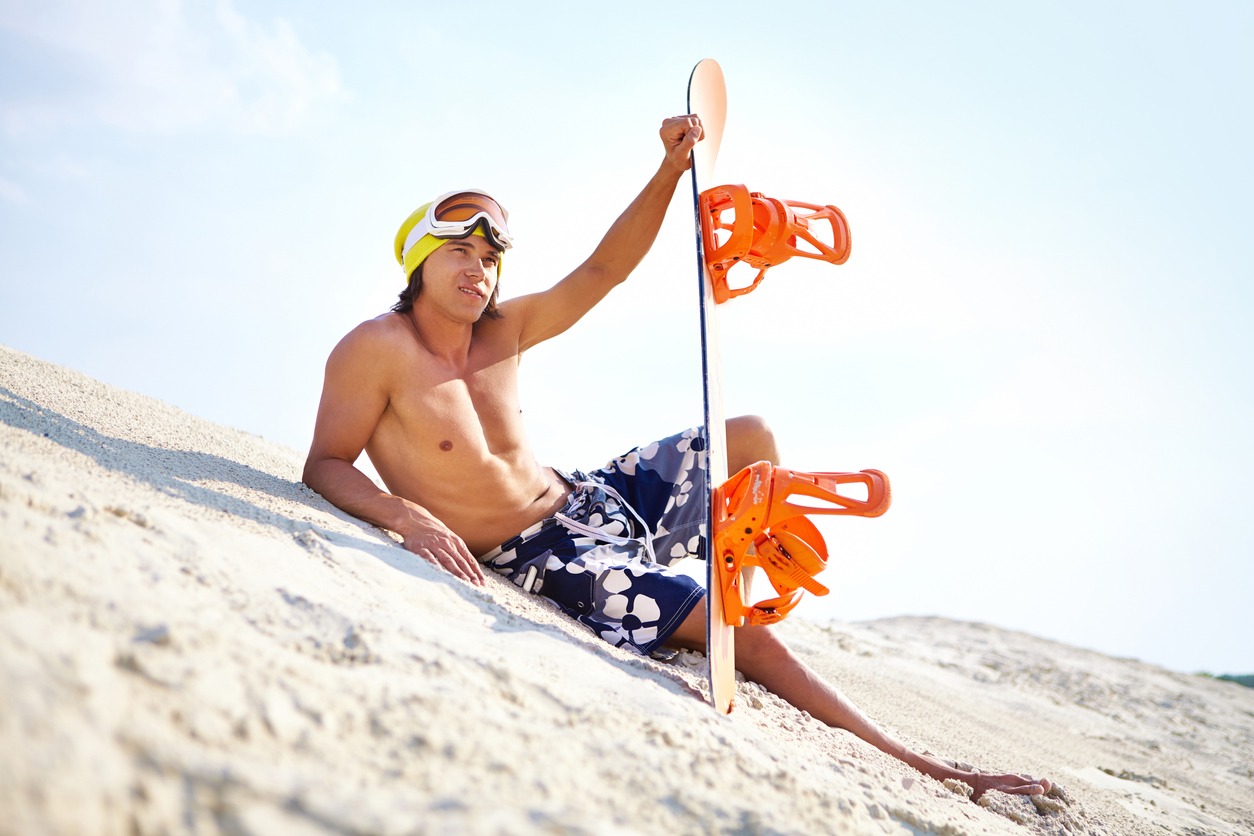Do You Need a License to Fly a Paraglider?

You might wonder if you need a license to fly a paraglider. In the U.S., a formal government-issued pilot's license isn't required. However, certification from the United States Hang Gliding and Paragliding Association (USHPA) is crucial. This certification ensures safety and proficiency across different skill levels, from beginner to expert. Interested in how the certification system works, what it takes to get certified, or the specific requirements for tandem flights and competitions? There's much more to uncover about navigating the skies responsibly.
Licensing and Certification
In the U.S., paragliding pilots don't need a formal government-issued pilot's license. Instead, certification is provided by the United States Hang Gliding and Paragliding Association (USHPA). To achieve certification, you must complete an approved training program and pass a proficiency exam, ensuring you have the essential skills and knowledge for safe paragliding.
The USHPA certification system includes four proficiency ratings: beginner, intermediate, advanced, and expert. Each rating corresponds to your experience and competence level, with an advanced rating required for those intending to compete in paragliding events.
Additionally, if you wish to conduct tandem flights, you'll need a special tandem rating in addition to your standard certification. This ensures you are equipped to handle the extra responsibilities and safety considerations involved in flying with a passenger.
Regulations and Safety
When flying a paraglider, adhering to regulations and safety standards is paramount. In the U.S., paragliders are regulated under the FAA's FAR Part 103 for ultralight vehicles. This mandates that your paraglider must weigh less than 254 pounds and have a top speed not exceeding 55 knots (63 mph). Although a pilot license is not required, you must follow these guidelines for safe flying.
To enhance safety, it's advisable to complete a certification program approved by the USHPA (United States Hang Gliding and Paragliding Association). The USHPA offers proficiency ratings ranging from beginner to expert levels. Completing their training program and passing the proficiency exam not only makes you a safer pilot but also opens up advanced flying opportunities, including competitions.
Here are three key points to remember:
- Weight and Speed Limits: Ensure your paraglider qualifies as an ultralight vehicle—under 254 pounds and a top speed below 55 knots.
- Certification Program: Completing a USHPA-approved training program and passing the proficiency exam is crucial for safety.
- Airspace Regulations: Always comply with FAA airspace regulations and avoid no-fly zones to ensure legal and safe flying.
Tandem Flights and Instructors

Experiencing the thrill of paragliding for the first time can be both exhilarating and intimidating, especially when you're soaring through the skies in a tandem flight. Tandem flights are ideal for novice passengers, allowing you to enjoy the experience without needing a pilot license. However, the person piloting the paraglider must be a certified instructor. These instructors undergo rigorous training and obtain a special rating specifically for conducting tandem flights, ensuring they meet high safety and proficiency standards.
Certified instructors not only need a pilot license but also complete additional training to become proficient in managing tandem flights, whether using paragliders or paramotors. Paramotoring is generally considered the safer option, providing added peace of mind. Liability insurance is another critical aspect, covering any potential injuries or damages that might occur during the flight.
The United States Hang Gliding and Paragliding Association (USHPA) sets guidelines and safety protocols for tandem paragliding operations. These standards ensure that certified instructors adhere to best practices, offering a secure and enjoyable experience for passengers. When planning your first tandem flight, rest assured that you'll be in the safe hands of a highly qualified professional.
Airspace Compliance
As a paraglider pilot, adhering to airspace compliance regulations is crucial for both safety and legality. The Federal Aviation Administration (FAA) oversees airspace in the United States, and it is essential to understand and respect these rules.
Here are three key aspects of airspace compliance you must follow:
- Understand No-Fly Zones: Certain areas are restricted for security reasons. Pilots must be aware of these no-fly zones to avoid violations and severe penalties.
- File Flight Plans: In controlled airspace, filing a flight plan with the FAA is mandatory. This ensures your flight is authorized and monitored, adhering to safety guidelines.
- Obey ATC Instructions: Compliance with air traffic control (ATC) instructions is imperative. It helps manage airspace effectively, ensuring the safety of all users. Ignoring ATC can lead to civil penalties or criminal charges.
Training Programs

To become a competent paraglider pilot in the U.S., you must complete an approved training program and obtain certification from a recognized organization like the USHPA. These programs equip you with essential skills, including ground handling, decision-making, and safe flying practices. Suitable for individuals aged 10 to 80, the training provides both theoretical knowledge and practical experience.
Typically, training spans around 8-9 days, during which you'll master the necessary skills to become a certified pilot. The comprehensive instruction includes initial flights under radio supervision, allowing instructors to offer immediate feedback to enhance your safety and confidence.
The cost for novice pilot certification ranges from $1,500 to $3,500, depending on the inclusion of equipment and training duration. While this may seem like a significant investment, it ensures quality training and prepares you for solo flights. Completing these programs is essential for joining the community of certified pilots and enjoying the exhilarating experience of paragliding safely.
Required Equipment
When preparing to paraglide, having the right equipment is essential for both safety and performance. You'll need key gear including a wing, harness, reserve parachute, helmet, safety knife, and a radio. Regular maintenance and thorough inspections of your equipment can significantly reduce the risk of accidents.
Essential Paragliding Gear
Every paraglider pilot, whether novice or seasoned, must have essential gear to ensure a safe and enjoyable flight. This equipment is vital for both safety and performance in the air. After obtaining your training and certification, investing in reliable gear is crucial. Here's an overview of the basics:
- Wing (Paraglider): This is the most critical component of your setup. Modern wings typically last 3-5 years, with newer models offering enhanced performance and safety features.
- Harness: The harness connects you to the wing, providing comfort and support during flights. With proper care, a high-quality harness can last over a decade.
- Reserve Parachute: This is your emergency backup. Always fly with a reserve parachute.
In addition to these, you should have a helmet, a safety knife, and a radio for communication. Regularly evaluate your gear with a porosimeter and conduct annual inspections, or after 100 flying hours, to ensure your equipment remains in top condition. The average cost for a modern used setup is around $4,750, a worthwhile investment for any serious paraglider pilot.
Equipment Safety Standards
Ensuring your paragliding equipment meets safety standards is crucial for a safe flight. Essential gear includes a wing made of rip-stop nylon, a harness, a reserve parachute, a helmet, a safety knife, and a radio for communication. Adhering to proper equipment safety standards ensures each item functions correctly to keep you safe in the air.
Before taking off, have a certified instructor inspect your gear to confirm it is in top condition and meets necessary safety guidelines. Regular inspections are important. It is recommended to have your equipment checked annually, or every two years, or after every 100 flying hours. This often involves using a porosimeter to evaluate the wing's condition.
While the initial setup costs of modern used paragliding equipment can be around $4,750, the wings generally last 3-5 years, with other gear lasting at least twice as long. Regular maintenance and inspections can extend this lifespan and enhance safety.
Statistics indicate that equipment failure is a rare cause of paragliding injuries; most accidents result from pilot error. By staying on top of equipment safety standards and regular inspections, you can minimize risks and enjoy your flight with greater peace of mind.
Community and Support

When you join a local flying club like the Santa Barbara Soaring Association, you'll find a welcoming community dedicated to both enjoyment and safety. Clubs, along with the United States Hang Gliding and Paragliding Association (USHPA), provide access to essential safety regulations and training. These resources help you navigate the skies confidently while connecting with other enthusiastic pilots.
Local Flying Clubs
Joining a local flying club, such as the Santa Barbara Soaring Association (SBSA), can greatly enhance your paragliding journey by providing a robust sense of community and support. These clubs offer numerous benefits designed to improve your skills and ensure your safety. Local flying clubs like SBSA often host events, training sessions, and social gatherings, facilitating connections with other pilots and promoting safe flying practices.
Here are three key advantages of joining a local flying club:
- Paragliding Training: Clubs offer structured training sessions led by experienced pilots, ensuring you learn proper techniques and adhere to safety regulations.
- Safety Regulations Compliance: Many clubs collaborate with the United States Hang Gliding and Paragliding Association (USHPA) to ensure all members follow the latest safety guidelines.
- Community and Resources: Membership typically includes access to shared equipment, valuable knowledge, and mentorship from seasoned pilots, enriching your overall flying experience.
Engaging with local flying clubs not only helps you build your skills but also fosters a supportive network of like-minded individuals. The shared flying experiences and community support make your paragliding adventures more rewarding and enjoyable.
Safety and Regulations
Understanding the safety protocols and regulations governing paragliding is crucial for a successful and secure experience. In the U.S., the United States Hang Gliding and Paragliding Association (USHPA) establishes essential safety standards and offers comprehensive training programs. They manage the certification process with proficiency ratings from beginner to expert, ensuring you possess the necessary skills for safe flying.
Local flying communities, such as the Santa Barbara Soaring Association, play a key role in educating pilots and protecting flying sites through collective efforts. These communities foster camaraderie and support among pilots, promoting comprehensive safety and adherence to regulations. They cultivate a culture of responsible flying practices that prioritize everyone's well-being.
Liability insurance is another critical aspect, especially for tandem pilots. This insurance covers potential passenger injuries or damages, highlighting the importance of safety in paragliding operations. Engaging with local clubs and adhering to USHPA guidelines will help you navigate the training process effectively, ensuring a safer and more enjoyable paragliding experience.




